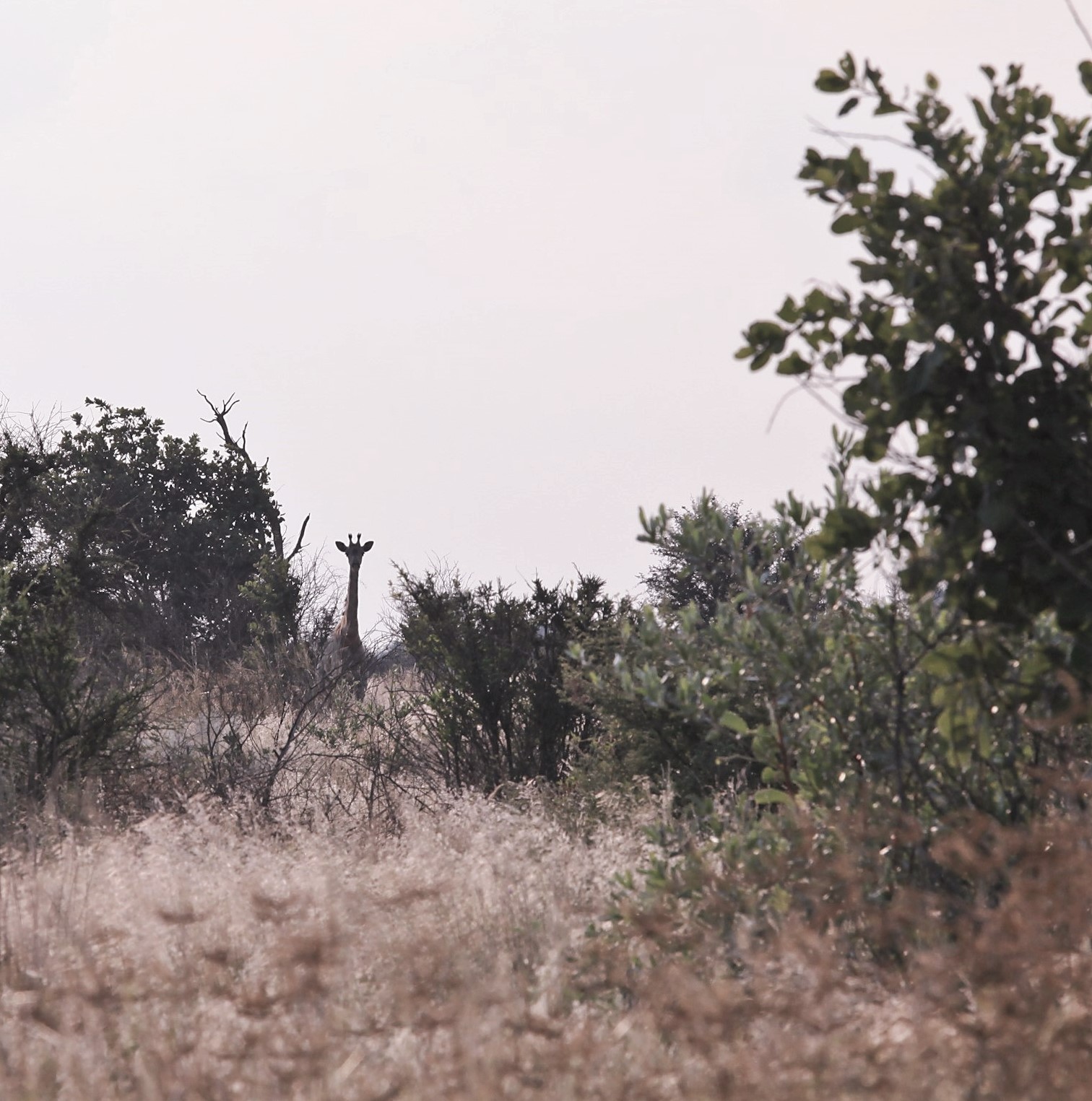The day was blustery and hued in smudged greys and charcoals and muttered greens. A brief hint of yellow flickered through the screen of trees to my left. I stopped and half crouched behind a young apple leaf tree. It was a lone young female giraffe. I kept dead still, but the moment she rounded the tree, she spotted me. Perhaps it was the tiny sound of the mobile camera.
She froze and stood, staring at me intently, neck craned, ears intensely pricked. She wasn’t sure what she was seeing. I was downwind from her so she couldn’t smell me either. This was a remote area, and in her four or so years on earth, she may not yet have encountered the human. But she was not feeling comfortable about me.
As we stood eyeing each other over the forty-odd paces that separated us, I thought, “It is unlikely that she is alone. The rest of the herd had to be somewhere close. It wouldn’t be big, in this arid area; probably two to four others, mostly other females, perhaps young, perhaps even a bull. They may be further back, or close, also staring at me, motionless and hidden by foliage.”
I slowly turned my head, but apart from the fairly open lane towards her, the area around was quite dense. I could not see anything. But then, from my right, a rasping snort and a thump – a giant hoof striking the ground. My young female swung away into a stately gallop, and briefly, the bush filled with the pounding of heavy hoofs and cracking of branches. It sounded like about four, but I only caught a fleeting glimpse of a slender neck or two weaving through the trees.
The young female had probably breathed a low sigh that was just beyond my comfortable hearing frequency, but perfectly audible to the rest of her family – watch out, there is something strange in our midst. At least one also spotted me and decided to snort an alarm.
Spotting African animals on casual walks through the bush foot before one is discovered is actually quite rare. With a few exceptions, they have incredibly fine senses, and especially the ones under threat from other animals are extremely alert. You need a good measure of skill, care and even more luck to spot them first, let alone get close. In general, they seem to like humans a lot less than the other way round, so they will flee if they detect you anywhere near their flight zone.
Giraffes have the added advantage of being able to look over vegetation. They have excellent eyesight and they are very alert, especially when there are lions around. I was a bit lucky to spot the young female first, and even though it was brief and mainly in silhouette, it was a special treat on a dreary day. On such days, animals seem to prefer staying hunched up in sheltered spots and not move around a lot.
This was a chance encounter, but in the bush I do not make a point of getting close to wild animals. I especially try to avoid getting into their personal space or influencing their behaviour in any way. I think they have quite enough of humans as it is. I enjoy much more observing them go about their natural business from a detached distance, or deciphering their activities from the signs they left behind.
The challenge of survival, the uncertainty of what will be encountered next and how the day or the night will turn out, and the ever-present danger of the untouched wilderness is a big part of what makes me crave it. But being amongst wild animals and being able to observe and study them in their natural environment is as key an attraction too. A barren stretch of bush with no animal life in it quickly loses its lure for me – then survival becomes a tedium.
An encounter like this, even though I could not avoid being detected, and with a fairly common animal, gives a lot of satisfaction and food for wonder – the four(?) giraffes, where did they come from, when and where did they last drink, where would they go for water if the waterhole they used dried up, what happened to them over the dangerous hours of darkness, did they perhaps lose one of their number to lions, were any of the females pregnant, how far advanced, and so many other questions that may or may not bring colour to a tiny, tiny part of the great mystery of the wilderness.

